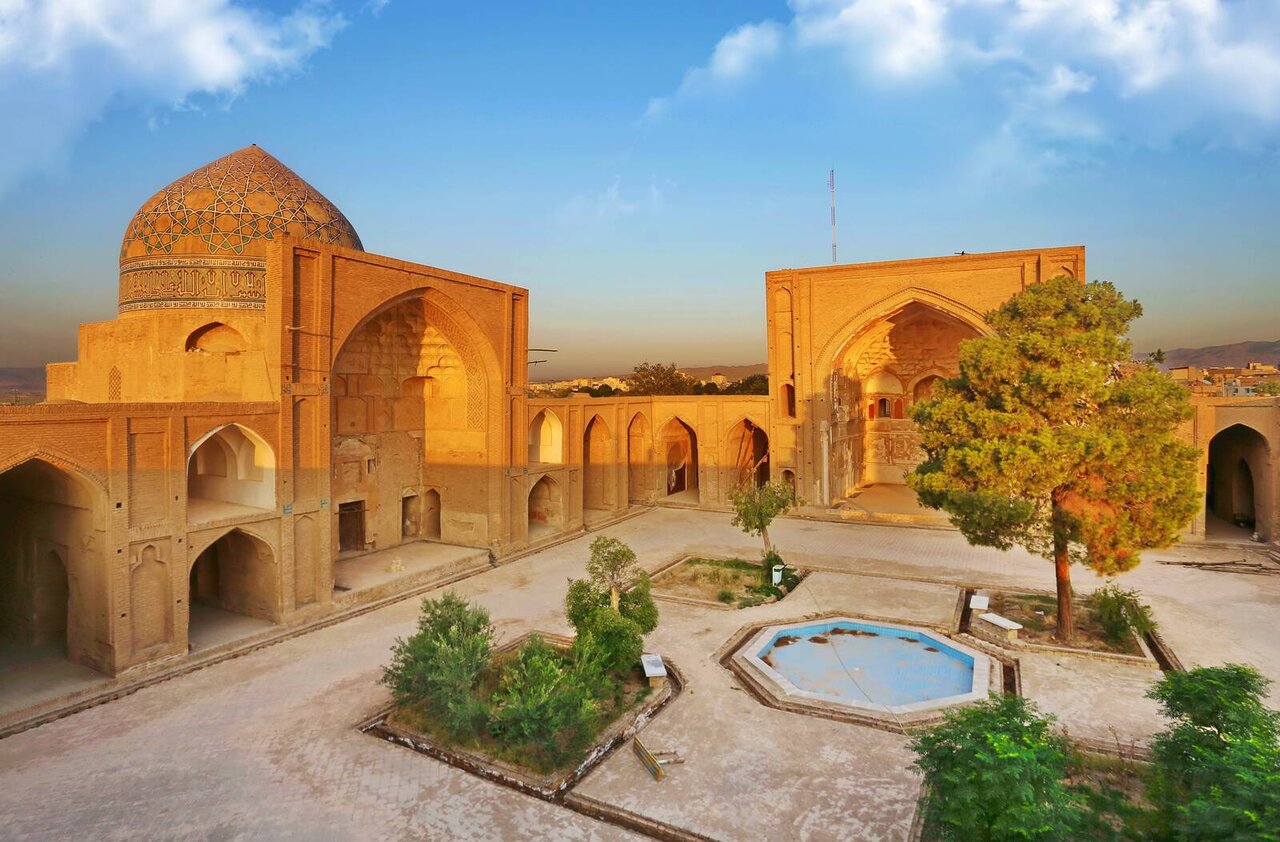30 mosques selected so far collect a UNESCO label

TEHRAN - On Tuesday, the Deputy Minister of Cultural Heritage, Tourism, and Handicrafts announced that 30 historical mosques across 12 provinces in Iran have been identified as eligible for possible inclusion in the UNESCO World Heritage list.
Ali Darabi made the remarks during his visit to the Jameh Mosque of Saveh, one of Iran’s candidates for this collective heritage listing.
Darabi stated that the criteria for a UNESCO registration are meticulously examined during UNESCO evaluators' visits.
He added the Jameh Mosque of Saveh boasts architectural features from various historical periods. “Additionally, its integration with the local community and preservation of authenticity throughout different eras are among the criteria that make this mosque a strong candidate for World Heritage status.”
Referring to the archaeological excavations carried out at the Jameh Mosque of Saveh, Darabi mentioned that during the 1980s, excavations led to the discovery of architectural remains, including a [Zoroastrian] fire temple.
"However, other parts of this thousand-year-old mosque still require excavation, and funds were allocated for its restoration last year."
In an interview with reporters, Darabi noted that national funds (for the restoration of historical sites) are insufficient for the projects queuing for World Heritage registration. He emphasized that the necessary preparations and infrastructures must be put in place for the historical mosques to be reviewed and potentially registered by UNESCO evaluators.
The deputy minister also highlighted the role of civilians in safeguarding the country’s cultural heritage. He then highlighted the formation of a cultural heritage benefactors association officially established in Arak, the capital of Markazi province, saying: “This association aims to secure resources from benefactors and philanthropists for the restoration of historical buildings.”
In every corner of Iran, cascades of photogenic domes and minarets can be seen as inseparable elements of mosques, some of which are widely known as timeless benchmarks of Islamic architecture.
Among the country’s must-see, gorgeous places of worship are Nasir Al-Molk Mosque in Shiraz, Sheikh Lotfollah Mosque in Isfahan, Shah Cheragh Mosque in Shiraz, Imam Mosque of Isfahan, Jameh Mosque of Yazd, Blue Mosque in Tabriz, Goharshad Mosque in Mashhad, Vakil Mosque in Shiraz, Agha Bozorg Mosque in Kashan, to name a few.
A mosque, locally called masjed (aka masjid, which is “a place of prostration” to God), is any house or open area of prayer in Islam. Generally speaking, the architecture of mosques in Iran is a combination of symmetry, geometric designs, and vibrant colors.
From an architectural point of view, Iranian mosques vary from one region to another, due to geometric structures, materials, and styles specific to each location. These mosques often have very complex structures in which color variations, tiles, and symbolic designs are used.
AM
Leave a Comment